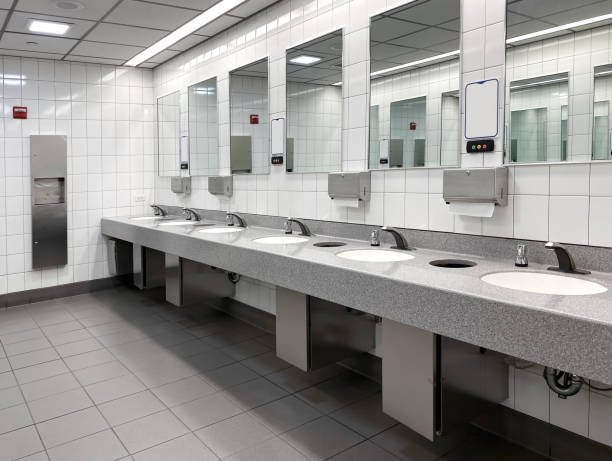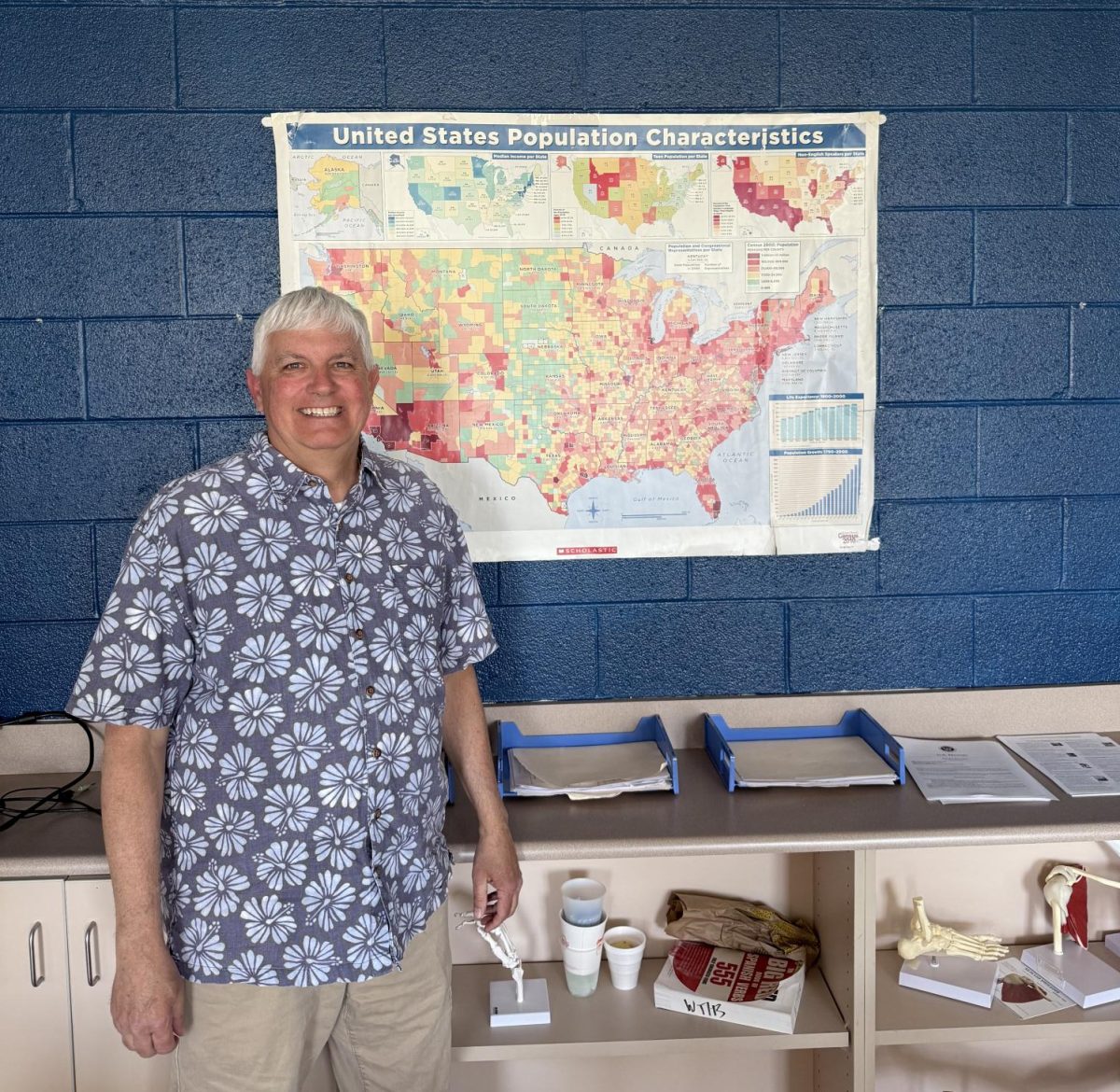Opinion – We Need to Talk About the Bathrooms
Wide angle view of public restroom
January 30, 2022
It should come as no surprise that staff and students alike were dismayed when the latest set of bathroom restrictions, arguably more demanding than the last, were unveiled at the start of the second semester. Although many Blue Devils hoped that the new year would bring change to the school community—and rid of the novel policies instated just weeks before break—it appears that issues with behavior at Warren are more chronic than first thought.
In case you aren’t caught up with Warren news, here’s the story: at the beginning of last December, teachers were instructed to limit restroom usage during instructional time. More specifically, they were expected to refrain from issuing bathroom passes altogether, though many just refused to do so during the first and last 10 minutes of class. Administrators claimed this was to help students “focus on their cumulative assessments”, but what about now? Between October’s “devious licks”, people skipping class, fights, and other inappropriate behavior occurring rampantly in the restrooms, the real reason for the policies seem clear, although the lack of transparency is concerning members of this district. Regardless of the cause, it’s clear that both Almond and O’Plaine students are upset with recent restrictions, and this isn’t just speculation. A recent questionnaire answered by some 60 students shows that approximately 94% are both unhappy with the new policies and believe that they will be ineffective at reducing less-than-desirable behavior, while 86% responded that they would benefit from more relaxed policies. A few anonymous seniors remarked on the irony that they’re 18 and still having to jump through hoops to use the bathroom, while another student claimed that “the [school’s] intention is valid, but doesn’t fix the root of the problem”. They went as far as to blame the restrictions themselves for the issue, stating that if people “are treated like kids, then people will act like kids.” Although 60 students certainly do not represent a school of 4,000, given the results of the survey, it wouldn’t be wrong to assume that at least a majority most people feel somewhat similar.
While the feelings of the Warren community are apparent, could the disappointment of the student body be misplaced? Are the restrictions as ineffective as they claim? Taking all things into account, perhaps it’s time to take a closer look at these controversial policies.
Sign-out Sheet
This restriction is as basic as they come: write your name and the time that you left the classroom, then the time that you returned. Although a highly determined student could lie about how long they’ve been out of class, any long periods of time would certainly attract the attention of the teacher, who could then verify the student’s honesty using the sheet. On the other hand, it does require additional effort on the part of the teacher to maintain and creates another obstacle for well-natured students when simply doing their business. Overall, sign-out sheets seem effective enough, though it’s doubtful that it would make a long-term dent into the rock that is poor behavior.
Hall Passes
Hall passes are nothing new at Warren, and it’s fair to say that a majority of teachers employed their usage prior to the bathroom restrictions. Although this was partly to keep students from being questioned by hall monitors about their being away from class, passes still serve a similar purpose in this case. Having students bring a pass with them to the bathroom will not necessarily deter poor choices, though it will allow security to identify those in the hall with a purpose versus those wandering idly. The only potential concern would be with non-disposable passes, such as physical objects and lanyards from a teacher’s classroom. Unless they are being disinfected between uses (which they aren’t), the spread of COVID-19 and other germs poses a risk to those in the class.
Assigned Bathrooms
With this restriction, classrooms are assigned a specific restroom that should be the only one that students use. This bathroom is, as expected, the one nearest the room. Although this policy is sensible in theory and many would assume that students already default to the closest bathroom, it does little to combat behavioral concerns as there is no way to monitor which restroom is being used. Furthermore, not all teachers clearly state which bathroom their students should be using. There also appears to be a discrepancy between the enforcement of this restriction across the two campuses. While bathrooms at Almond are visibly labeled to indicate who should be using them, there appears to be no such distinction at O’Plaine.
First and Last 10 Minutes
And the last, but not least restriction being discussed in this article, is the “no-bathroom-usage-during-the-first-and-last-minutes-of-class” rule. What a mouthful. It’s difficult to find the benefits in this policy, as it directly prevents students from using the bathroom during the arguably best time to do so. The beginning and especially the end of class is when the teacher is the least likely to be teaching, making it the prime time for students to use the restroom. This prevents them from disrupting the lesson and potentially missing out on important information in their absence.
All in all, it would appear that these restrictions, while not as bothersome as first expected, have many faults that both disadvantage students and staff and can be exploited by those keen on engaging in prohibited actions. If the time were taken, however, to consider the opinions of the student body and teachers when deciding to alter, remove, or add to these policies, perhaps they could be made more effective and their intrusiveness reduced.









